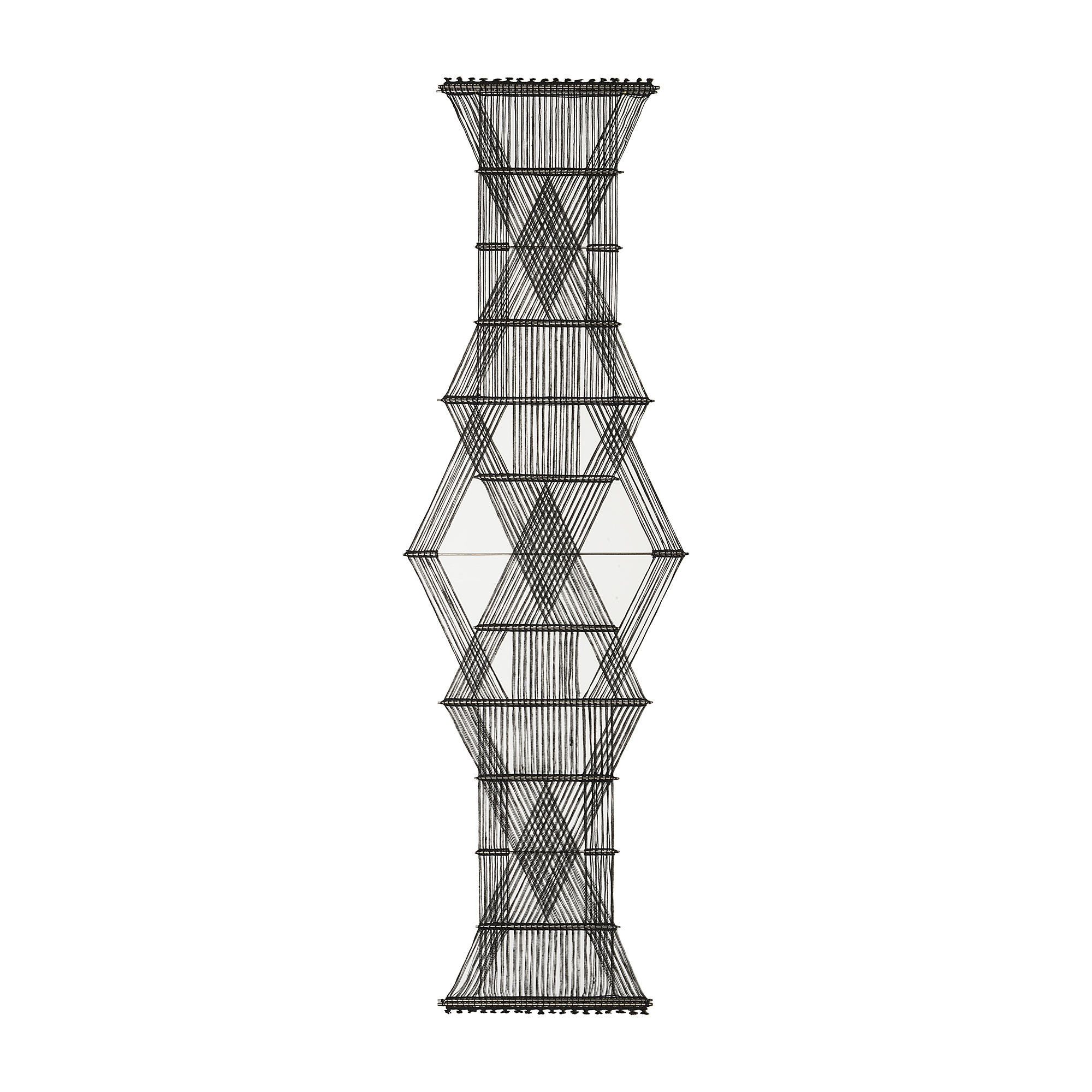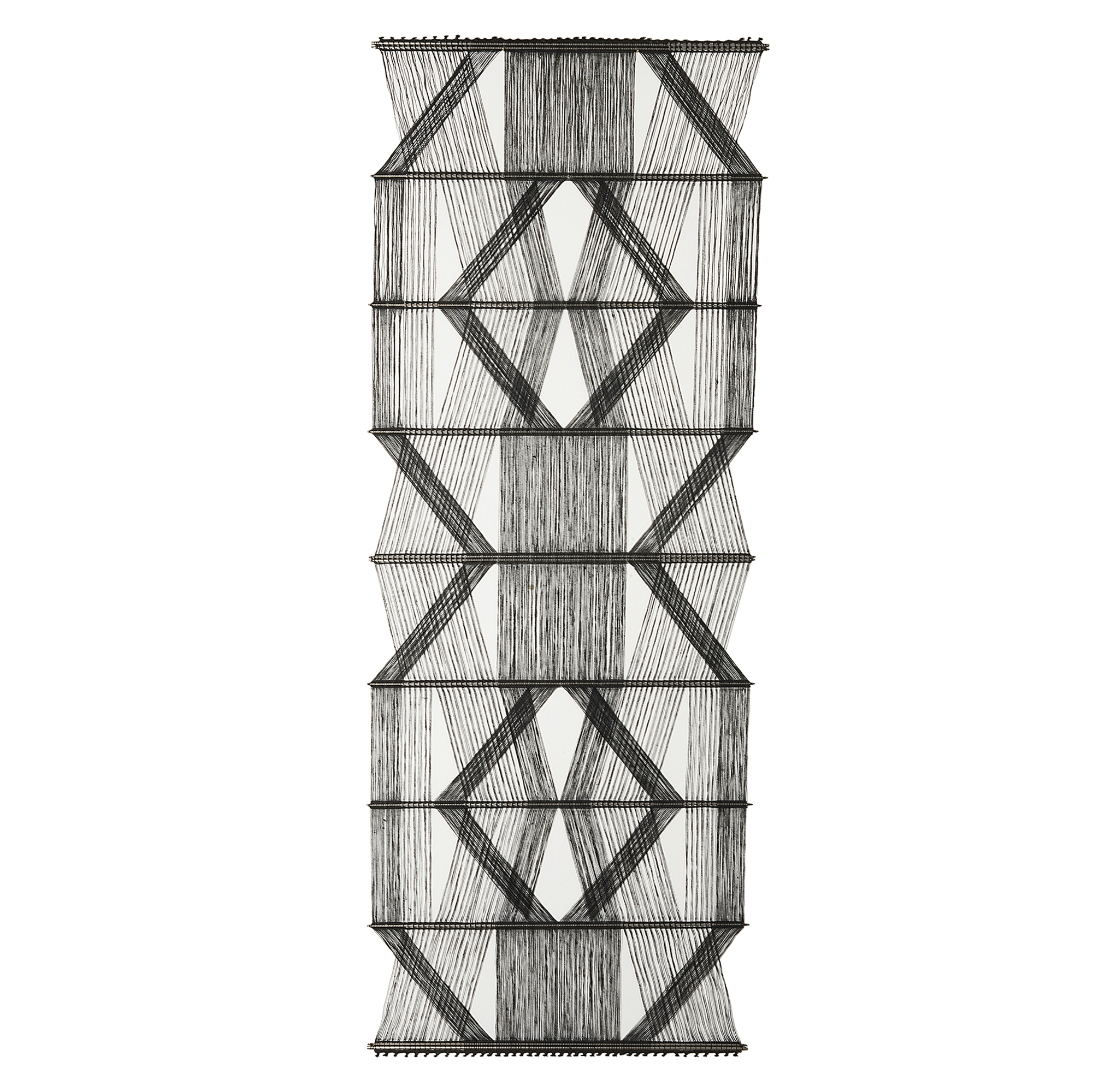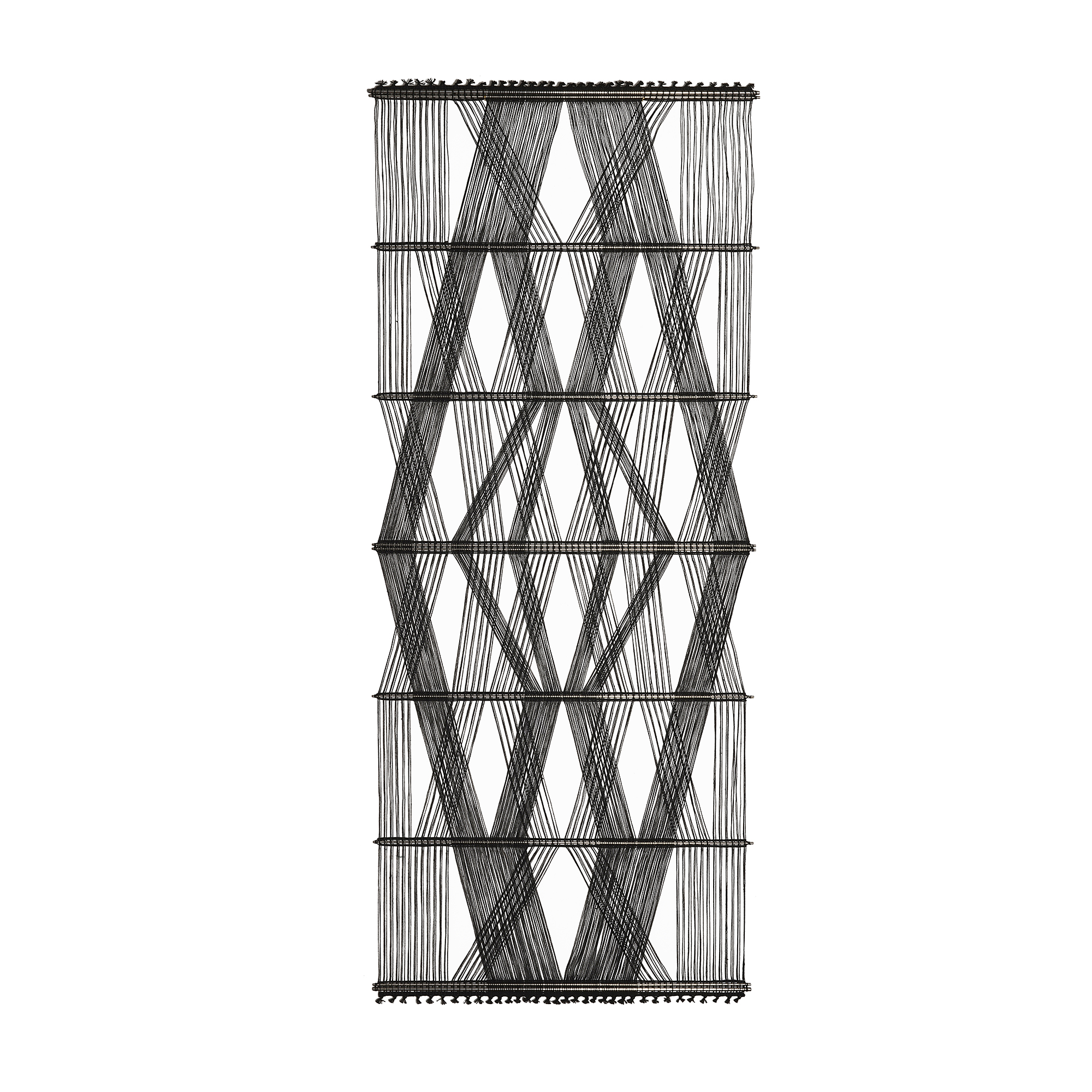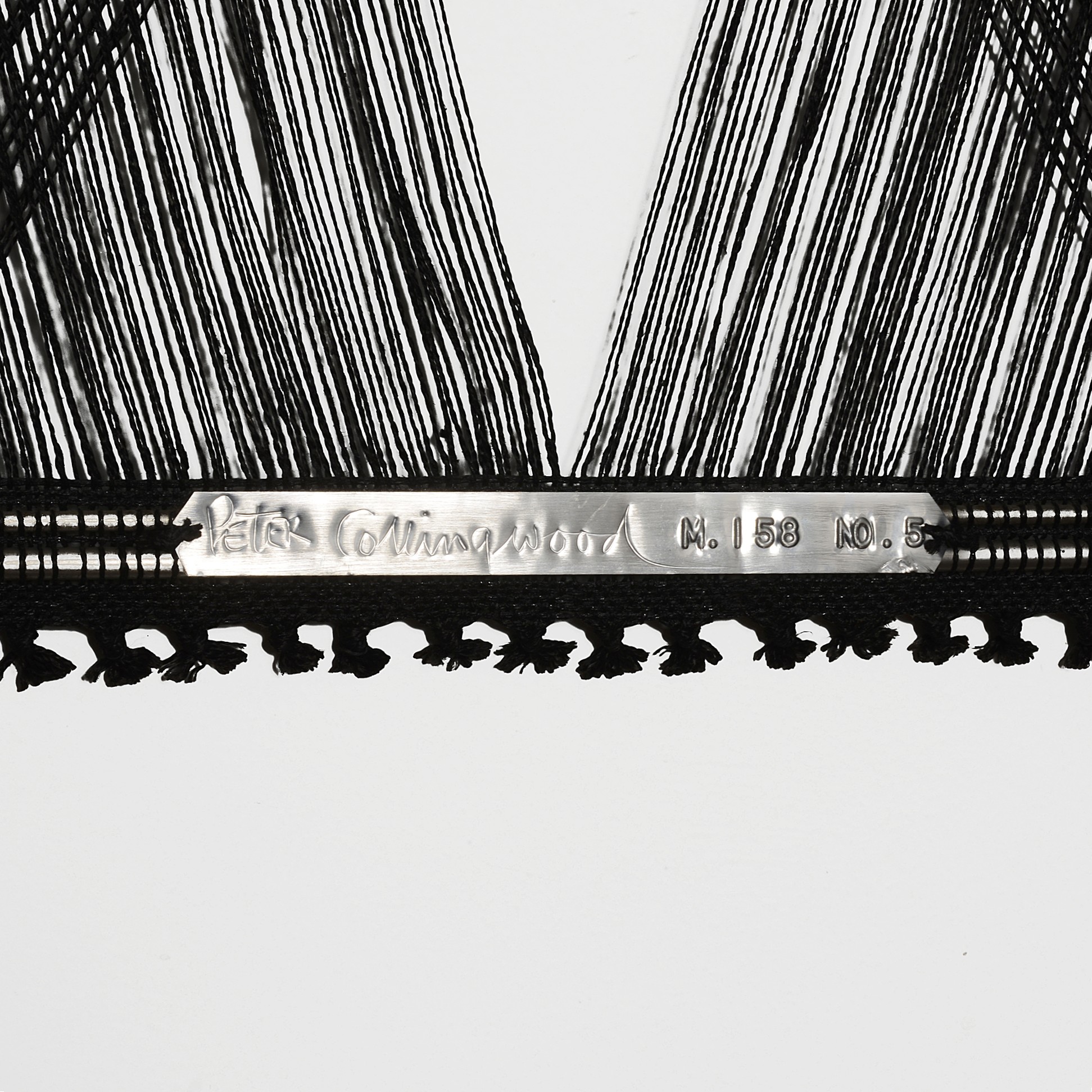Peter Collingwood was one of the pre-eminent British artist textile weavers of the 20th Century. Known for this technical ability, he worked as an artist and wrote many books on his practice and innovations in weaving. Collingwood is an artist that is appreciated and collected worldwide.
Collingwood was born in London in 1922 and spent his early studying at St Mary's hospital and Epsom college in preparation for following in his father's footsteps as a doctor. He went on to complete National Service in the Royal Army Medical Corps and the Red Cross but knew doctoring was not his destiny, textiles was his true passion.
During this period he would make looms out of deckchairs and weave scarves for the wives of the offices' wives. On his travels, he was gifted a Bedouin tent-hanging which sparked an interest for textile structures.
He returned to Britain with a clear focus on pursing his passion and spent time at Ditchling with prominent weaver Ethel Mairet and later Barabara Sawyer and Alastair Morton.
In 1952 he set up independently in a workshop in Archway, North London where it gave him the freedom to explore new ideas and built all his own equipment. At this time, he also began lecturing at Hammersmith, Camberbell and Central.
In 1957 Collingwood was invited by Henry Morris, who founded Digswell Arts Trust in Herefordshire to join as a fellow. It was here, where he met Hans Coper and his wife to be, Elizabeth Brunston.
With demand of his work growing, in 1964 he was able to afford to by an old school in Colchester which he converted where he worked lived with his wife and two children until his death.
It was here where he made his Macrogauze wall hangings of which he is most noted, both 2D and 3D structures. He was one of the few full-time weavers that was able to make a living from his work and wrote five books of weaving techniques and textiles. He was awarded an OBE in 1974.
His son Jason Collingwood also became a weaver.



